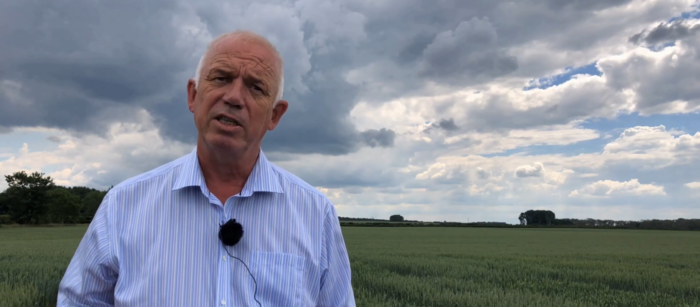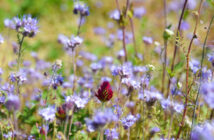With the national wheat area set for a big increase this autumn, agronomy firm Farmacy has produced a timely guide to the varieties best suited to the eastern region, widely regarded as Britain’s breadbasket.
The firm is trialling 33 different wheat varieties at its Fincham Regional Technology Centre (RTC) in Norfolk, a free-draining sandy clay loam site, with high soil pH.
Like many areas in 2019/20, plots were drilled later than planned due to the wet autumn, however this provides a good opportunity to see how varieties perform in late-drilling situations, as is common for cereals following roots or late-lifted vegetables in the region.
Whether sowing early or late, the choice on the Recommended List can seem daunting, so in his latest Farmacy Live video update (https://farmacy.plc.uk/farmacy-live), agronomist Peter Riley offers tips for selecting the most suitable varieties and picks some worth considering.
Just 15 of the 35 varieties on the RL account for 80%+ of certified seed this year, so it is these he is focussing on.
“In this part of the world, bearing in mind we don’t have chlorothalonil in 2021, one rough rule I’m suggesting is to consider varieties with Septoria resistance of over 5.5; that’s probably more important for the earlier drillings than the later drillings.”
In higher-risk areas, such as Herefordshire for example, he suggests increasing that minimum Septoria score to 6.5.
Growers should also only use rust resistance scores (brown and yellow rust) as a guide, as they can be subject to change given the sporadic and unpredictable nature of the disease.
Variety picks
In the Group 1 sector, Mr Riley picks out Skyfall for its late drilling flexibility, Crusoe as the established “millers favourite” and KWS Zyatt, which is particularly suited to second wheat situations, although he acknowledges it has experienced yellow rust issues which must be managed carefully.
He reminds anyone considering quality wheats to first talk with end users to determine their requirements before making any decision about what to grow.
Among the Group 2s, Mr Riley says KWS Extase is a leading contender in this region, and is likely to take share from KWS Siskin, given its excellent Septoria resistance, good specific weight and suitability for later drilling after root crops. “Extase doesn’t really want to go in before mid-October, but it’s going to be a big player.”
The biscuit-making Group 3 KWS Firefly is another sound choice given its quality characteristics and premium potential. Brown rust is the main issue to beware of, as the variety’s rating dropped last year and may do so again, although the disease is relatively easy to manage, he notes.
In the Group 4 sector, Mr Riley says the soft wheats LG Skyscraper and newcomer RGT Saki could make a good pairing; Skyscraper being a high-yielding, vigorous variety suited to later drilling into October, while Saki has good Septoria resistance and suits slightly earlier drilling. As both are soft wheats, there are no issues with having to segregate at harvest.
There are several other “barn fillers” to consider, including Gleam, KWS Kerrin, RGT Gravity and Graham, the latter offering good Septoria resistance and can be drilled reasonably early. Gleam is likely to be prominent again this autumn given its Septoria resistance and versatile drilling date as a first or second wheat, although it too has experienced some yellow rust in 2020, which should be considered.
Mr Riley says another newcomer, KWS Kinetic, looks a “terrific” variety, however it has had severe issues with yellow rust in some areas this season, so growers need to be cautious and invest in protecting the crop. “But for every other character in early-drilling, high-yielding East Anglian conditions, Kinetic would have been a nailed-on choice.”
SY Insitor also appears promising as the joint highest-yielding variety on the RL, good Septoria resistance and specific weight.
One option that did not make it onto the RL is KWS Parkin; a variety with good yield, reasonable disease resistance, and early maturity, which could particularly suit growers further north, he suggests. “If you want to spread harvest dates, then Parkin could be an option.”
Early indications from the candidate varieties suggest LG Astronomer, KWS Cranium and RGT Wolverine look interesting, Mr Riley says. Wolverine is attracting particular interest as the first variety with BYDV resistance although it sold out early for 2020/21.
Hybrid wheats
Hybrid wheats are gaining attention as new varieties come to market, and several options have been trialled at RTCs, including Fincham, where Hyking and Hyguardo are in the ground this harvest.
Mr Riley says the extra vigour and rooting capacity benefits of hybrids over conventional breeds appear more evident following the late sowing and difficult establishment conditions last autumn and winter.
“Hybrids may well come out of this trial looking quite good. Whether they would do in perfect conditions earlier drilled is another matter, but the whole subject is of great interest because there are new hybrids coming along in the next few years which will make a lot of difference to how we grow wheat in the future. These are really exciting developments.”




